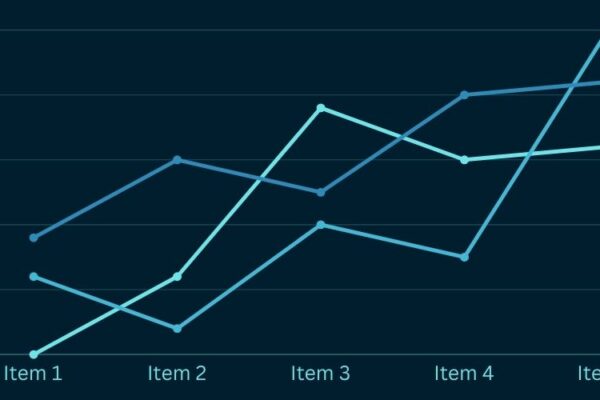In a time of economic turmoil, businesses face a multitude of obstacles. Fluctuating markets, geopolitical tensions, and the looming threat of recession have created financial instability, making it difficult for companies to thrive. During these challenging times, the natural inclination is to be cautious, especially when it comes to investments and growth strategies. However, the most crucial business decisions are made precisely during periods of uncertainty. This article delves into one such pivotal decision: the impact of new technology investments in mitigating the effects of economic downturns. It examines tech investment’s paradoxical yet potentially transformative power in a climate where every financial move is carefully weighed for its risks and rewards.
The Paradox of Tech Investment in Economic Slowdowns
During economic downturns, it is common to see a pullback in investment, particularly in technology, to protect capital and minimize risks. However, this approach may overlook the potential long-term benefits of such investments. Surprisingly, downturns can be a great opportunity to invest in technology. Competition for new technology decreases during these times, potentially leading to lower costs and better negotiation terms. Additionally, investing in technology during slowdowns can position businesses for faster recovery and growth when the market bounces back. Advanced technologies can streamline operations, improve efficiency, and open new revenue streams essential for staying competitive.
Cost optimization is crucial in this approach; it’s not about spending but strategically investing in technologies that offer the highest return on investment and align with long-term business goals. Prioritize investments that reduce operational costs, enhance customer experiences, and align with long-term business goals. This approach helps businesses to not only weather economic challenges but also emerge stronger and more adaptable.
New-Age Technologies as Catalysts for Growth
New-age technologies, often seen as the foundation of the Fourth Industrial Revolution, present unprecedented business opportunities, especially during economic decline. These technologies are more than just means to sustain operational flow; they drive expansion and creativity.
Robotics and AI: Robotics simplifies the manufacturing and logistics processes, leading to lower labor expenses and fewer mistakes. AI’s predictive analytics improve decision-making and customer satisfaction, making resource utilization more efficient and increasing sales.
Generative AI: The advent of ChatGPT opened up new vistas for generative AI (GenAI) as a means of implementing sharper and smarter data strategy and governance in enterprises. From data extraction to structuring, quality management, and security are witnessing a boost through innovative AI modeling. In the manufacturing industry, GenAI creates better predictive maintenance, customer service automation, document search and synthesis, product catalog discovery, and supply chain discovery among others. A recent survey suggests that over 82% of organizations are considering or currently using GenAI to transform their business.
Cloud Computing and Big Data: McKinsey predicts that 70% of companies will embrace hybrid or multi-cloud technologies because they provide operational flexibility and cost efficiency. The expansion of cloud computing has also driven the growth of Big Data analytics, offering deeper market insights and an understanding of customer behavior, which is crucial for making strategic decisions in uncertain times.
- Blockchain: Blockchain enhances secure transactions, supply chain visibility, and data reliability, ultimately lowering operational risks and expenses.
- 3D Printing: It facilitates quick prototyping and on-demand manufacturing, reducing inventory expenses and facilitating personalized product offerings, thereby expanding market opportunities.
- AR-VR: AR-VR technologies elevate customer interaction and satisfaction, which is essential for standing out in a competitive market.
- IoT: IoT’s ability to monitor real-time data enhances efficiency across various industries, from manufacturing to retail, facilitating more intelligent resource distribution.
- 5G Technology: 5G technology promises to significantly improve business communication and IoT effectiveness by providing 100 times faster bandwidth and 40 times lower latency than 4G.
- Low-Code Development Platforms: With a projected CAGR of 33% (2022-2030), these platforms democratize app development, enabling rapid and cost-effective development of digital solutions.
IDC predicts that global data production is expected to exceed 180 zettabytes by 2025 and over half of user interactions are anticipated to involve AI by 2024, companies that harness these technologies can greatly enhance productivity, cut expenses, and foster innovation. This positions them for substantial growth even in difficult economic circumstances.
Tips to Accelerate Business with New Age Technologies
Strategic Investment and Scalability – Introducing modern technologies requires making strategic investments that prioritize return on investment. Businesses should opt for technology that addresses current challenges and has the potential for future growth. As the economy rebounds, businesses with adaptable tech solutions are poised for rapid expansion. These technologies must align with long-term business goals and be flexible enough to meet changing market needs, ensuring that today’s investments continue to pay off as the business expands.
Exploring New Business Models – The pandemic has spurred innovation, leading businesses to adopt new technological approaches. AI, cloud computing, and IoT have broadened customer access and transformed service delivery. Cloud-based systems have facilitated remote work, while e-commerce and digital payments have revolutionized traditional retail. These technology-driven strategies maintain operations during difficult times and create opportunities in new markets and customer segments
Automation, Data, and Employee Skill Enhancement
The urgent need for business efficiency and growth drives the use of automation and data analytics. Automation can minimize errors and allocate resources to strategic tasks, while data analytics offers crucial insights for informed decision-making. However, maximizing the potential of these technologies requires employee skill enhancement. Upskill your workforce to transform them into valuable assets that fuel innovation and growth.
Investing in People and Cultivating an Innovation Culture
Focusing on developing human capital is just as crucial as focusing on technological advancements. Implementing employee training initiatives is vital for providing staff with the necessary skills to adapt to evolving technology. Additionally, fostering an environment that promotes innovation stimulates imaginative thinking and trial-and-error, ultimately resulting in significant discoveries and maintaining the company’s position at the forefront of technological progress
Tech and Strategic Partnerships for Risk Management
Establishing strategic alliances is a wise method for mitigating the risks linked to new technology investments. Teaming up with technology companies or colleagues in the industry can grant access to specialized knowledge, cut down on expenses, and distribute risks. These partnerships cultivate a competitive advantage, enabling businesses to efficiently harness shared expertise and resources.
First Mover Advantage
Incorporating new technologies offers significant value addition to businesses. With early adoption, companies gain a first-mover advantage, setting themselves apart in the market. Whether through enhanced customer experiences, streamlined operations, or innovative products and services, new tech positions businesses as market players and leaders. This foresight in technology adoption can define a business’s trajectory in the rapidly evolving digital landscape.


